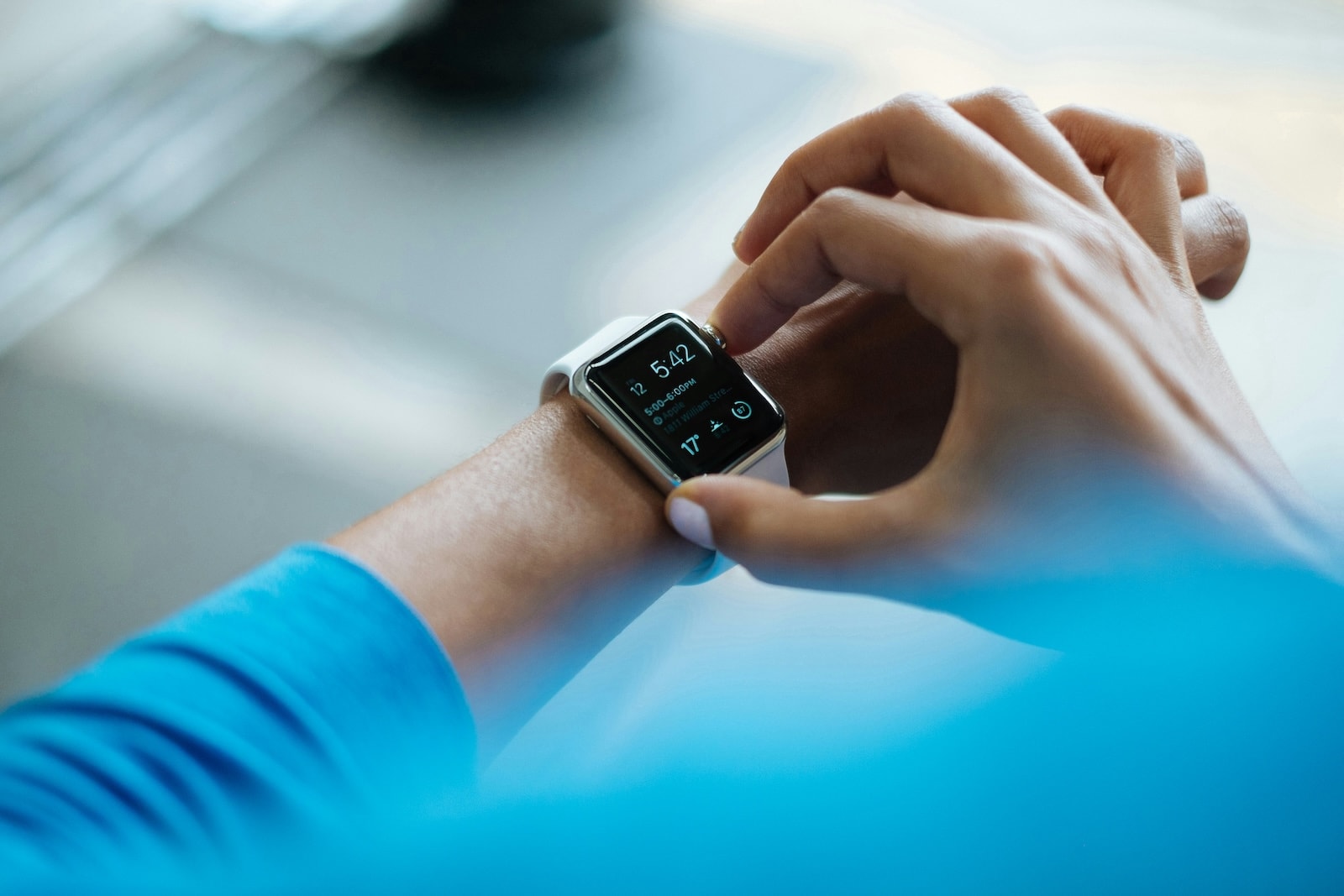What is wearable technology?
Wearable technology refers to electronic devices that users can wear on their body. These devices are designed to be comfortable and discrete, and often operate autonomously or in conjunction with other devices such as smartphones. Their main feature is the ability to collect real-time data from users or their environment, process it, and in many cases, provide information or direct interactions.
The rise of wearables has been driven by the miniaturization of electronic components, the development of more accurate and efficient sensors, and the improvement of wireless connectivity (Bluetooth, Wi-Fi). These devices not only seek functionality, but also aesthetic integration and user comfort by becoming a natural extension of the person.
Types and uses of wearables
The wearables market continues to expand, with new devices and functionalities constantly emerging. We're going to tell you about the most popular types of devices and how they can be used in different areas:
Smartwatches
Smartwatches are undoubtedly the most well-known and popular wearables. Beyond telling the time, these devices connect to our smartphone to display notifications, enable calls, control music, and provide access to apps. They incorporate sensors to monitor physical activity, heart rate, and even sleep. In professional environments, wearables can improve efficiency and safety.
Fitness trackers
Fitness trackers are simpler and more affordable than smartwatches and are primarily focused on monitoring physical activity and health. They monitor how many steps we take, the distance traveled, calories burned, sleep quality, and in many cases, heart rate. They are popular among athletes and people who want to lead an active lifestyle, helping them to optimize training, prevent injuries, and track their physical progress.
Smart glasses
Smart glasses integrate technology into conventional glasses and project information directly into the user's field of vision or enable hands-free interactions. Although widespread adoption has been slower than with other wearables, some companies like Meta are exploring their potential for augmented reality, photography, and communication. In industrial environments, for example, smart glasses can provide real-time information to technicians, guide them through complex tasks, or enable remote expert assistance, thereby reducing errors and downtime.
Smart clothes
Smart clothes are made from fabrics that directly incorporate sensors and electronic circuits. This makes it possible to discretely and continually monitor certain physiological parameters like heart rate, respiration, and body temperature, or even provide functions such as heat or light. Although it is still a niche, it has great potential in elite sport, medicine, and occupational safety.
Medical devices
Wearable medical devices are specifically designed for health monitoring and diagnosis. This category includes a range of technology from patches that continuously measure blood glucose levels to devices that record electrocardiograms or monitor vital signs in chronic patients. Their use is revolutionizing remote healthcare and prevention.
Entertainment and leisure
Wearables have also found their place in entertainment. We can control music from our smartwatches, while smart glasses and augmented reality headphones open new dimensions for video games and immersive experiences. Some devices can even enhance the experience at theme parks or museums by providing contextualized information.
Health and assistance
Wearable technology can be a crucial ally for personal safety. These devices include emergency buttons that send somebody's location to predefined contacts or the emergency services, or accessories that monitor the activity of elderly people or people with medical conditions and alert caregivers in the event of a fall or prolonged inactivity. In the workplace, they can detect driver fatigue or warn of dangers in high-risk environments.
Advantages and challenges
Wearable technology offers multiple advantages: it improves health and well-being, increases productivity, facilitates communication, and provides greater safety. Its ability to collect immediate, continuous, and personalized data empowers users and opens up new avenues for preventive healthcare and efficiency in work and sports.
However, it also faces significant challenges. Data privacy is a fundamental concern as these devices collect highly sensitive information about our health and habits. Cybersecurity plays a crucial role in protecting this data from any unauthorized access. Other challenges include battery life, the accuracy of sensors in all scenarios, interoperability between different brands and platforms, and the cost of some devices, which still limits mass adoption.
Despite these challenges, wearable technology has a promising future. Thanks to continuous innovation in materials, batteries, and artificial intelligence algorithms, these devices will continue to evolve, become even further integrated into our lives, and offer increasingly sophisticated and personalized solutions.

